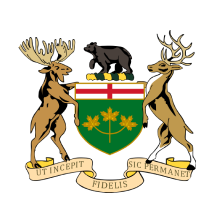In British Columbia, concerns are mounting over recent changes to land use planning. Critics argue that the government is not being transparent about its intentions. Randene Neill, the minister of water, land and resource stewardship, addressed these concerns in a lengthy Facebook post on August 1. She claimed that recent changes had been “misunderstood.”
Earlier in 2024, the province attempted to overhaul land use planning through amendments to the Land Act. These proposed changes would have granted First Nations decision-making powers over public lands. However, the government downplayed the potential impact of these amendments. Public engagement opportunities were announced with minimal promotion, leading to accusations that the government was trying to avoid public scrutiny.
Veteran journalist Vaughn Palmer highlighted the issue, prompting public backlash. In response, the government backed down on the amendments but continued to pursue the transfer of decision-making power to First Nations through other means. In August 2024, the NDP government agreed to transfer six square kilometers of public land to the Shishalh Nation, a deal that was only disclosed in January 2025. Neill, who was elected in October, stated she was unaware of this agreement until after the provincial election.
This summer, the government has followed a similar approach. On June 3, it announced consultations for land use planning in northwestern B.C., which encompasses nearly a third of the province. Many residents were likely unaware of the opportunity for public engagement regarding these significant changes. Critics argue that the government should have made a greater effort to inform the public about the implications of the proposed land use changes, which require extensive outreach and time.
On June 26, the government signed a new land use agreement with the Squamish Nation, updating a deal from 2007. This agreement outlines the boundaries of areas deemed important by the Squamish Nation, which are candidates for protection based on cultural and spiritual interests. The deal emphasizes the need for management direction regarding claim staking and resource exploration while protecting the integrity of the Squamish Nation’s interests.
Some of these areas overlap with municipal jurisdictions and private lands, including parts of Vancouver. The agreement states that the province will engage in future discussions with the Squamish Nation and local governments regarding the protection of these interests. However, the potential impact on private lands remains uncertain.
Critics have noted that the government often releases significant news just before long weekends, suggesting an attempt to minimize public scrutiny. Following the June announcements, the government remained silent on land use planning until Neill’s Facebook post in August. In that post, she revealed that online feedback surveys had been open since June 3 and would close on August 8. These surveys were not mentioned in the initial news release or announcements.
Neill reassured the public that land use plans “do not, and will not, apply to private land.” She stated, “If you own private property within a planning area, your land is not included in the plan and your rights as a property owner remain the same.” Despite these assurances, skepticism persists regarding the government's commitment to transparency in land use planning.

 Canada News
Canada News

 CNN
CNN The Daily Bonnet
The Daily Bonnet The Toronto Sun MMA
The Toronto Sun MMA Local News in Ontario
Local News in Ontario Calgary Sun
Calgary Sun Raw Story
Raw Story People Books
People Books